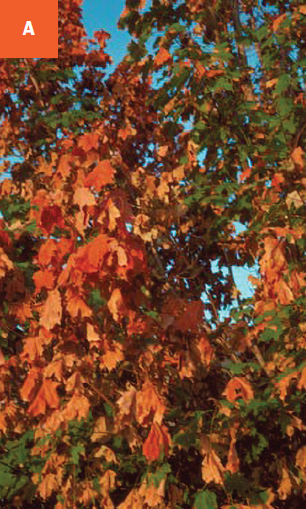Drought Stress
DAMAGE/SYMPTOMS Drought stress is most apparent in areas of the tree crown that are in full sun. Chlorosis, leaf scorch, wilting, reduced growth, fewer/smaller leaves, and shorter growth between leaf buds are all symptoms of drought stress. Early leaf/needle drop (premature senescence) and lowered energy reserves for survival through winter are also issues. Drought-stressed trees have decreased resistance to pests, so they are more vulnerable to secondary attacks.
OCCURRENCE Newly planted trees are the most vulnerable to drought stress due to an underdeveloped root system. Drought stress occurs when the plant is unable to extract enough water from the soil to properly function. Under drought conditions, soil might bind available moisture, making it unavailable to the plant. For instance, clay soils can inhibit absorption.
SUSCEPTIBILITY/TOLERANCE Well-established trees are less likely to show symptoms of drought stress. Trees planted within three years or less are more likely to sustain permanent injuries due to drought. Trees native to Montana are more tolerant of drought conditions.
MANAGEMENT Water trees weekly in the fall until the ground freezes. This will reduce the chance of stress in the summer. Removing competing vegetation such as grass from beneath a tree’s canopy will make more resources available to the tree and may reduce drought stress. Use three to four inches of mulch to the edge of the tree canopy to insulate the fine feeder roots from drying out. Water slowly and deeply rather than quickly and shallowly.
A Premature coloration of maple leaves due to drought. B Dogwood with damaged leaves from effects of drought. C A conifer exhibiting browning and premature casting of needles due to drought stress.



